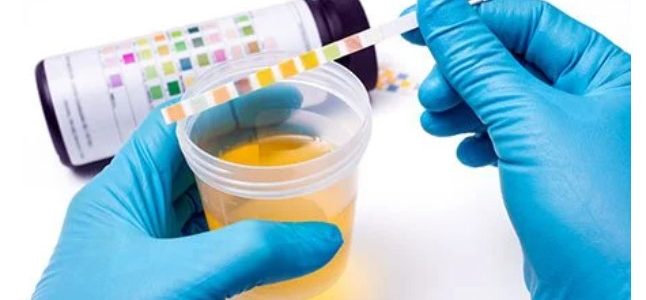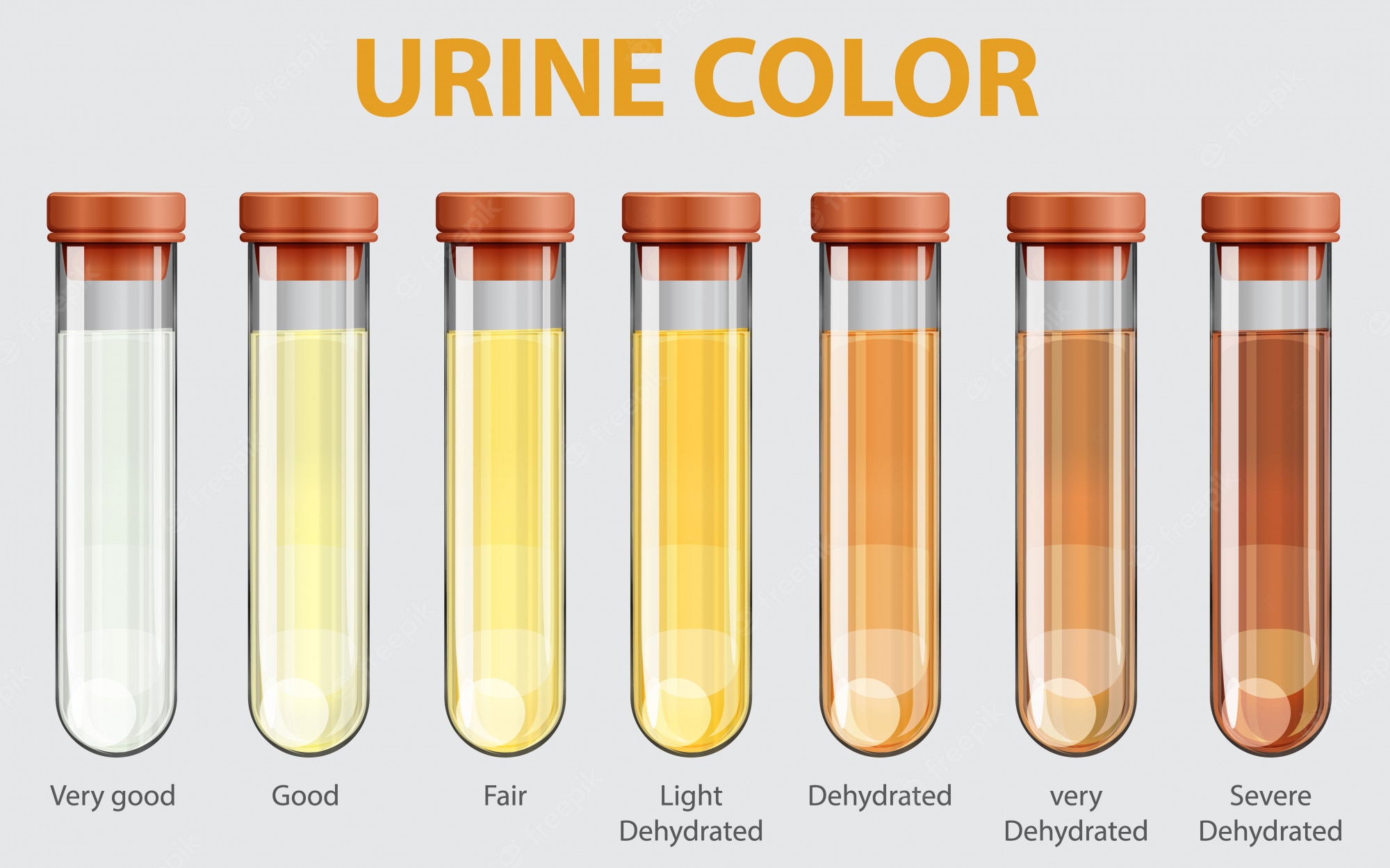
What is a urinalysis?
A urinalysis (also known as a urine test) is a test that examines the visual, chemical and microscopic aspects of your urine (pee). It can include a variety of tests that detect and measure various compounds that pass through your urine using a single sample of urine.
Healthcare providers often use urinalysis to screen for or monitor certain common health conditions, such as liver disease, kidney disease and diabetes, and to diagnose urinary tract infections (UTIs).
While several different aspects of your health can be tested with a urine sample, your healthcare provider will choose which tests to order under a urinalysis depending on your symptoms and situation.
What tests are included in urinalysis?
Your healthcare provider can include several different tests in a urinalysis. Depending on your symptoms, existing health conditions, and/or situation, your provider will choose which urine tests to order under a urinalysis.
In general, a healthcare provider or laboratory technician can examine a urinalysis urine sample for the following broad aspects:
- Color and appearance.
- Chemical findings.
- Microscopic findings.

Urine color and appearance
For most urinalysis tests, a healthcare provider examines how the urine sample looks to the “naked eye.” They check if it’s clear or cloudy and if it’s pale, dark yellow or another color.
Normal urine color is usually some shade of yellow and can range from colorless or pale yellow to deep amber, depending on how concentrated or diluted (watery) your urine is.
Many things can affect the color of your urine, including certain medications and supplements and certain foods you eat, such as beets. However, an unusual urine color can also be a sign of disease. For example, red-colored urine can happen when blood is present in your urine and can be an indicator of disease or damage to a part of your urinary system.
Cloudy urine doesn’t always indicate unhealthy urine. For example, sperm and skin cells are harmless and could make your urine appear cloudy. Other substances that can make your urine cloudy, such as red blood cells, white blood cells and bacteria, may indicate several different medical conditions, including:
- Dehydration.
- Urinary tract infection (UTI).
- Sexually transmitted diseases and infections(STDs and STIs).
- Kidney stones.
- Diabetes

Urine chemical findings
To examine chemical aspects of a urine sample, healthcare providers or lab technicians often use special test strips called dipsticks to test for certain chemical substances in the urine sample. The strips have pads of chemicals that change color when they come in contact with specific substances.
The degree of color change on the dipstick can give an estimate of the amount of substance present. For example, a slight color change in the test pad for protein may indicate a small amount of protein present in the urine sample, whereas a deep color change may indicate a large amount.
Common types of tests that use a dipstick that providers may include in a urinalysis include:
- Protein urine test: A protein urine test measures the presence of proteins, such as albumin, in your urine. Higher-than-normal urine protein levels may indicate several different health conditions, such as heart failure, kidney issues and dehydration.
- Urine pH level test: A urine pH test measures the acid-base (pH) level in your urine. A high urine pH may indicate conditions including kidney issues and a urinary tract infection (UTI). A low urine pH may indicate conditions including diabetes-related ketoacidosis and diarrhea.
- Ketones urine test: Ketones build up when your body has to break down fats and fatty acids to use as fuel for energy. This is most likely to happen if your body does not get enough sugar or carbohydrates as fuel. Healthcare providers most often use ketone urine tests to check for diabetes-related ketoacidosis.
- Glucose urine test: A glucose urine test measures the amount of sugar (glucose) in your urine. Under regular circumstances, there shouldn’t be glucose in your urine, so the presence of glucose could be a sign of diabetes orgestational diabetes.
- Bilirubin urine test: Bilirubin is a yellowish pigment found in bile, a fluid produced by your liver. If you have bilirubin in your urine, it may indicate liver or bile duct issues.
- Nitrite urine test: A positive nitrite test result can indicate a urinary tract infection (UTI). However, not all bacteria are capable of converting nitrate (a substance that’s normally in your urine) to nitrite, so you can still have a UTI despite a negative nitrite test.
- Leukocyte esterase urine test: Leukocyte esterase is an enzyme that’s present in most white blood cells. When this test is positive, it may indicate that there’s inflammation in your urinary tract or kidneys. The most common cause for white blood cells in urine is a bacterial urinary tract infection (UTI).
- Urine specific gravity test: A specific gravity test shows the concentration of all chemical particles in your urine. Abnormal results may indicate several different health conditions.

Urine microscopic findings
A lab technician may examine a urine sample under a microscope to look for tiny substances in the urine, including:
- Cells
- Cell fragments.
- Urinary casts
- Mucus
- Bacteria or other germs.
- Crystals
Microscopic tests that providers may include in a urinalysis include:
- Red blood cell (RBC) urine test: An elevated number of RBCs indicates that there’s blood in your urine. However, this test can’t identify where the blood is coming from. For example, contamination with blood from hemorrhoids or vaginal bleeding can’t be distinguished from a bleed somewhere in your urinary system. In some cases, higher-than-normal levels of red blood cells in your urine may indicate bladder, kidney or urinary tract issues.
- White blood cell (WBC) urine test: An increased number of WBCs and/or a positive test for leukocyte esterase may indicate an infection or inflammation somewhere in your urinary tract.
- Epithelial cells: Epithelial cells are cells that form the covering on all internal and external surfaces of your body and line body cavities and hollow organs. Your urinary tract is lined with epithelial cells. It’s normal to have some epithelial cells in your urine, but elevated numbers of epithelial cells may indicate infection, inflammation and/or cancer in your urinary tract.
- Bacteria, yeast and parasites: Sometimes, bacteria can enter your urethra and urinary tract, causing a urinary tract infection (UTI). The urine sample can also become contaminated with bacteria, yeast and parasites, especially for people with a vagina. Yeast can contaminate the sample for people who have a vaginal yeast infection. Trichomonas vaginalis is a parasite that may also be found in the urine of people who have a vagina. It’s the cause of an STI called trichomoniasis.
- Urinary casts: Casts are tiny tube-like particles that can sometimes be in your urine. They’re formed from protein released by your kidney cells. Certain types of casts may indicate kidney issues, while others are completely normal.
Why do I need urinalysis?
Healthcare providers order urinalysis tests for several reasons since a urine sample can provide many insights into your health. Your provider may order a urinalysis for you for one or more of the following reasons:
- As part of your routine medical exam to screen for early signs of certain health conditions.
- If you’re experiencing and signs and symptoms of certain health conditions, such as diabetes or kidney disease.
- To monitor certain health conditions you’re receiving treatment for, such as diabetes or kidney disease.
- To diagnose a urinary tract infection (UTI).
- If you’ve been admitted to a hospital.
- As a preparatory checkup for surgery.
How common are urinalysis tests?
Urinalysis tests are very common. They’re a simple and non-invasive way to check several different aspects of your health.
What’s the difference between urinalysis and a urine culture?
A urine culture involves growing bacteria from a urine sample in a lab to diagnose urinary tract infections and other infections. Urine cultures are not part of routine urinalysis tests. Like a urinalysis, a urine culture sample must be obtained by the clean catch method or by inserting a catheter through the urethra into the bladder.
If your urinalysis results indicate a UTI is likely, your healthcare provider may order a urine culture for a laboratory to run off the urine sample you gave for the original urinalysis. A urine culture can determine the type of bacterium that caused the UTI.
Urinalysis can include several different tests, measurements and assessments of aspects of your urine.
How do I prepare for a urinalysis?
Before your urinalysis test, you’ll need to make sure you’ve drunk enough liquids, such as water, to be able to go to the bathroom and produce a urine sample.
Depending on the reason for the urinalysis, your healthcare provider may want the urine sample to be the first time you pee in the morning (first morning void). Your provider will let you know if this is the case.
Certain medications can change the color of your urine. Your healthcare provider may tell you to stop taking certain medications that can affect urinalysis test results. Only stop taking medications if your provider tells you to do so.
If you’re menstruating (on your period), it’s important to let your provider know before collecting your urine sample. Menstrual blood, as well as vaginal discharge, can interfere with certain urinalysis test results.
Why do I need urinalysis?
Healthcare providers order urinalysis tests for several reasons since a urine sample can provide many insights into your health. Your provider may order a urinalysis for you for one or more of the following reasons:
- As part of your routine medical exam to screen for early signs of certain health conditions.
- If you’re experiencing and signs and symptoms of certain health conditions, such as diabetes or kidney disease.
- To monitor certain health conditions you’re receiving treatment for, such as diabetes or kidney disease.
- To diagnose a urinary tract infection (UTI).
- If you’ve been admitted to a hospital.
- As a preparatory checkup for surgery.
How common are urinalysis tests?
Urinalysis tests are very common. They’re a simple and non-invasive way to check several different aspects of your health.
What’s the difference between urinalysis and a urine culture?
A urine culture involves growing bacteria from a urine sample in a lab to diagnose urinary tract infections and other infections. Urine cultures are not part of routine urinalysis tests. Like a urinalysis, a urine culture sample must be obtained by the clean catch method or by inserting a catheter through the urethra into the bladder.
If your urinalysis results indicate a UTI is likely, your healthcare provider may order a urine culture for a laboratory to run off the urine sample you gave for the original urinalysis. A urine culture can determine the type of bacterium that caused the UTI.
Urinalysis can include several different tests, measurements and assessments of aspects of your urine.
How do I prepare for a urinalysis?
Before your urinalysis test, you’ll need to make sure you’ve drunk enough liquids, such as water, to be able to go to the bathroom and produce a urine sample.
Depending on the reason for the urinalysis, your healthcare provider may want the urine sample to be the first time you pee in the morning (first morning void). Your provider will let you know if this is the case.
Certain medications can change the color of your urine. Your healthcare provider may tell you to stop taking certain medications that can affect urinalysis test results. Only stop taking medications if your provider tells you to do so.
If you’re menstruating (on your period), it’s important to let your provider know before collecting your urine sample. Menstrual blood, as well as vaginal discharge, can interfere with certain urinalysis test results.

Collecting a clean catch urine sample if you have labia
If you have labia, use the following steps to get a clean catch urine sample:
- Start by sitting on the toilet with your legs spread apart.
- Using two fingers, spread your labia open. Then, use one sterile wipe to clean the inner folds of your labia, wiping from front to back.
- Use another sterile wipe to clean over your urethra, the opening where urine flows out of your body.
- Urinate a small amount into the toilet.
- Stop the flow of urine, and hold the specimen cup a few inches away from your urethra.
- Urinate into the cup, filling it about half full or however full your provider instructed you to.
Finish urinating into the toilet.
Collecting a clean catch urine sample if you have a penis
If you have a penis, use the following steps to get a clean catch urine sample:
- Use a sterile wipe to clean the head of your penis. If your penis is uncircumcised, first pull back your foreskin to ensure a thorough cleaning.
- Urinate a small amount into the toilet.
- Stop the flow of urine, and hold the specimen cup a few inches from your urethra, the opening where urine flows out of your penis.
- Fill your specimen cup about half full or however full your provider instructed you to.
- Finish urinating into the toilet.
Collecting a urine sample with a catheter
- You or a healthcare provider can also collect a urine sample with a catheter using the following steps:
- You or a healthcare provider will thoroughly clean the area around the opening of your urethra with a germ-killing (antiseptic) solution.
- You or a provider will insert a thin rubber tube called a catheter through your urethra.
- Your urine will then drain into a sterile container.
- You or a provider will remove the catheter.
What should I expect after urinalysis?
Once you’ve collected your urine sample, your healthcare provider will send it to a laboratory for testing and viewing under a microscope. In some cases, your provider may examine the sample immediately and run dipstick tests on it.
Are there any risks to urinalysis?
The clean-catch method of urine sample collecting for a urinalysis doesn’t have any risks. It’s a painless and non-invasive test.
If you or your provider use a catheter to collect a urine sample for a urinalysis, there’s a risk of infection. It may also cause pain or discomfort.
When should I know the results of my urinalysis?
In most cases, it’ll take one to two business days to get your urinalysis results back
How do I read my urine test results?
Depending on which tests your healthcare provider ordered for your urinalysis, there may only be a few or several measurements on your test results. Laboratory reports, including urinalysis reports, usually provide the following information:
- The name of the urine test or what was measured in your urine.
- The number, measurement or assessment of your urine test result.
- The normal result, measurement range or assessment for that test.
- Information that indicates if your result is normal or abnormal.
Urine clarity refers to how clear your urine sample was. Most laboratories categorize the clarity of urine as one of the following:
- Clear
- Slightly cloudy.
- cloudy
- Turbid (opaque, or thick with suspended substances).
If you had a chemical urine test, such as a glucose urine test or nitrite urine test, the results may be categorized as negative or positive and/or indicate the amount of the substance.
If you had a microscopic urine test, such as one that checked for red blood cells (RBC) or bacteria, the laboratory will likely categorize the number (results) of the substance as one of the following:
- fewer
- moderate
- many
Should I be concerned if I have an abnormal result on my urinalysis?
If one of your urinalysis test results is abnormal, it doesn’t necessarily mean that you have a medical condition.
Several factors can affect or interfere with urinalysis test results, including:
- Certain medications and supplements, such as metronidazole and vitamin C supplements.
- Contamination of germs or other substances, such as vaginal discharge or menstrual blood, during the urine sample collection.
- Error in the processing of the test.
Your healthcare provider will consider your medical history, current medications and your results and let you know if you need to repeat the test or undergo further testing.
When should I call my doctor?
If you notice any changes in your urine, such as a persistent change of color, odor or consistency, contact your healthcare provider.
If you’re experiencing symptoms of a urinary tract infection (UTI), such as a strong, persistent urge to urinate, and/or a burning sensation when urinating, contact your healthcare provider or go to an urgent care facility.
A urinalysis is a helpful and common test that can give insight into several aspects of your health. Know that having an abnormal result for one of your urinalysis tests doesn’t necessarily mean you have a medical condition. Many factors can affect your results. Your healthcare provider will let you know if you need to undergo further tests to determine the cause of the abnormal level. Don’t be afraid to ask your provider questions. They’re there to help you.
References
https://my.clevelandclinic.org/health/diagnostics/17893-urinalysis
